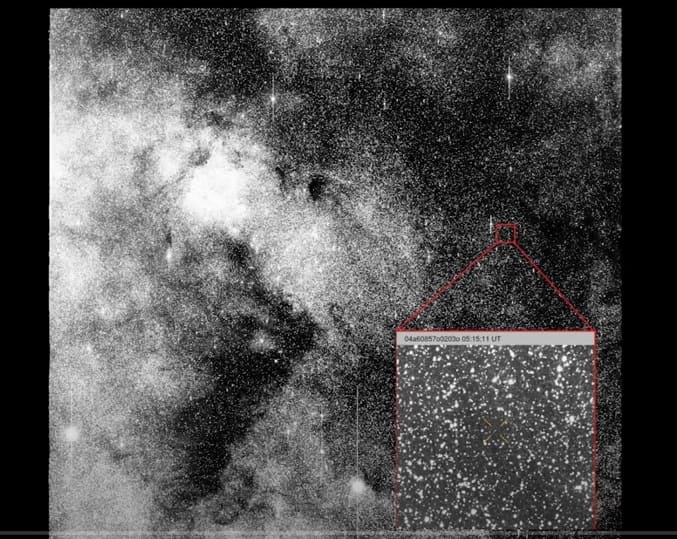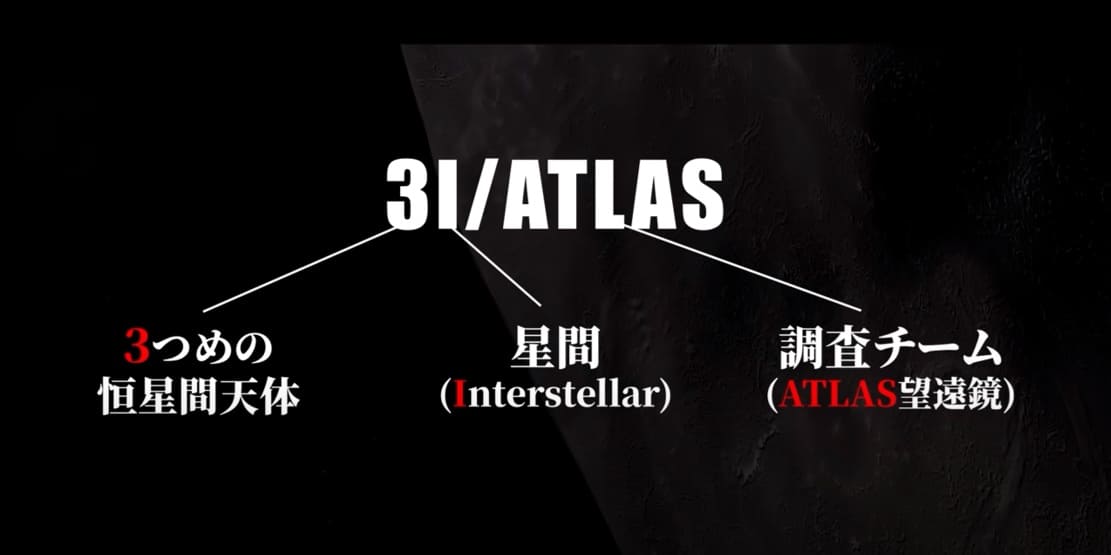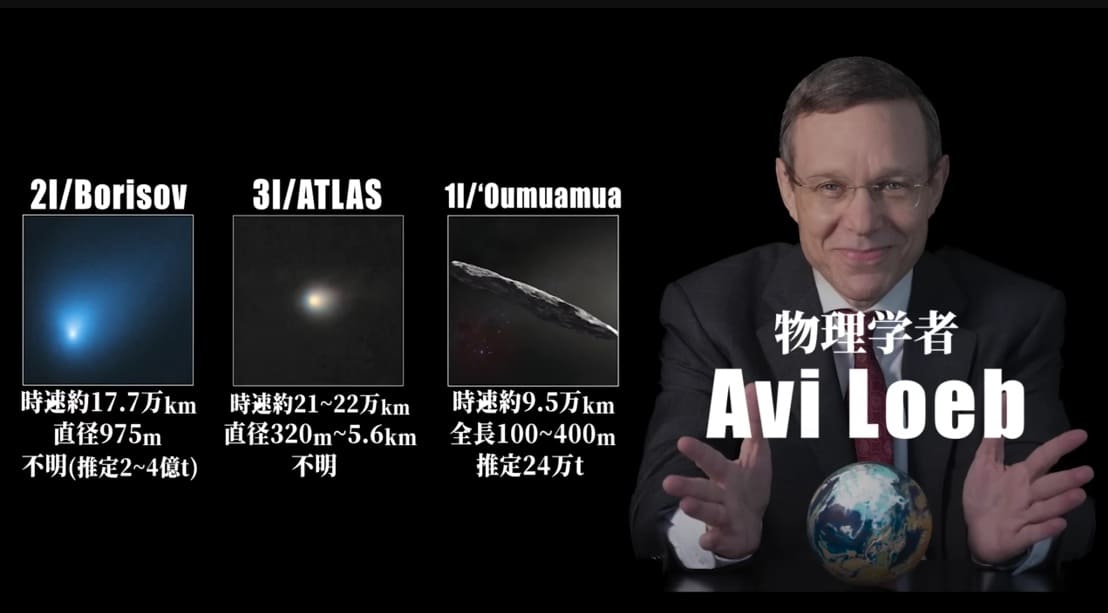













New Oumuamua - Everything Currently Known About 3I/ATLAS|The Third Interstellar Object
//Summary//
1) Overview and Basic Information
3I/ATLAS has been confirmed as the third interstellar object passing through our solar system.
The letter “I” stands for interstellar, meaning that the object comes from outside the solar system.
It was discovered on July 1, 2025, by the ATLAS telescope (Asteroid Terrestrial-impact Last Alert System) in Chile.
After the discovery, astronomers analysed previous observation data and confirmed that it has an interstellar origin.
2) Orbit, Motion, and Approach Information
This object does not follow an elliptical orbit but a hyperbolic orbit, meaning it will pass through the solar system without being captured by the Sun’s gravity.
It is moving at a very high speed — about 61 km/s (around 130,000 miles per hour) at the time of discovery.
Its closest point to the Sun (perihelion) is expected to occur around late October 2025, at a distance of about 1.3–1.4 astronomical units, roughly near Mars’s orbit.
Its closest distance to Earth will still be quite far, so it poses no danger to our planet.
3) Physical Characteristics and Observations
3I/ATLAS shows a coma (a cloud of gas and dust) and a tail, which means it behaves like an active comet.
Observations with the James Webb Space Telescope (JWST) using near-infrared spectroscopy revealed that the coma contains mainly CO₂ (carbon dioxide) gas.
There is also evidence of H₂O (water), CO, OCS, ice particles, and dust.
Water emission, estimated from OH radiation, has also been detected, suggesting that the object remains active even far from the Sun.
Polarisation observations reveal that 3I/ATLAS exhibits a deep negative polarisation minimum, which is unusual compared to known small bodies and comets, suggesting unique surface or dust properties.
An anti-tail (a structure appearing to point toward the Sun) has also been observed. Studies suggest this could be explained by the lifetime of ice particles or the direction of material ejection.
4) Scientific Importance and Discussions
This is a rare opportunity to observe material from another star system directly. It provides important clues about the chemical composition, material evolution, and planet formation in other systems.
3I/ATLAS is the third interstellar object after ‘Oumuamua and 2I/Borisov. Scientists are comparing them to study both their differences and similarities.
Its comet-like activity and the dominance of CO₂ in its coma may suggest it formed in a different environment than typical comets in our solar system.
However, details such as its size, nucleus structure, and composition are still uncertain, and more data and analysis are needed.
There are discussions about future space missions to intercept interstellar objects (like the Comet Interceptor mission), but a mission focused specifically on 3I/ATLAS is unlikely due to limited preparation time.
1)
0:03
The Asteroid Earth Impact Final Alert System has issued a warning that a mysterious celestial body is attempting to enter our solar system.
This is the third interstellar object encountered by humankind, designated 3I/ATLAS.
However, as observations progressed, it became apparent that this object exhibited entirely anomalous readings, unlike any previous interstellar object.
This time, incorporating the latest information, we examine everything currently known about 3I/ATLAS, accompanied by actual images.
2)
The Discovery of 3I/ATLAS:
0:41
The object was first observed by the Atlas Telescope in Chile, which monitors near-Earth asteroids.
At the time of discovery, the object was located on Jupiter's orbit, approximately 676 million kilometres from the Sun.
Named after the survey team that discovered it, this object became known as 3I/ATLAS.
The letter “I” stands for “Interstellar”, signifying its origin from beyond our solar system.
The number “3” in its designation indicates it is the third interstellar object discovered.
We shall touch upon the first and second objects later, but how was it determined that 3I/ATLAS originated beyond our solar system?
3)
According to the European Space Agency (ESA), over 30,000 asteroids alone have been discovered orbiting within 45 million kilometres of Earth's orbit.
Expanding the search to include Mars and Jupiter, and factoring in undiscovered bodies, the number of minor planets would swell considerably.
Nevertheless, the reason 3I/ATLAS was identified as an interstellar object is that it possesses sufficient velocity to escape the Sun's gravitational pull.
The Sun's gravity governs the orbits of planets and asteroids within the Solar System, causing them to orbit the Sun in circular orbits.
The degree to which an object's orbit deviates from a perfect circle is quantified by a value known as the orbital eccentricity.
A perfect circle has an orbital eccentricity of 0; the further from this, the less the body is influenced by the Sun's gravity.
4)
3I/ATLAS has an orbital eccentricity of approximately 6.1, indicating it is largely unaffected by the Sun's gravitational pull.
At the time of its discovery, its speed was approximately 210,000 to 220,000 kilometres per hour.
This is fast enough to travel from New York to Beijing in just three minutes.
After approaching Mars to within 30 million kilometres, it will come within 270 million kilometres of Earth (on December 19) and pass approximately 210 million kilometres from the Sun around October 30. It is expected to cross Jupiter's orbit and depart the solar system.
At present, there is no possibility of danger to Earth or any other planet.
5)
Some scholars suggest its age may exceed 7.6 billion years.
3I/ATLAS may well be an observer that has journeyed through various stellar systems since a time long before the birth of our solar system, witnessing the entire lifecycle of stars.
Approximately three months have passed since the discovery of 3I/ATLAS, and its detailed characteristics are gradually becoming clearer.
However, these values were markedly anomalous compared to those of the two previously observed interstellar objects.
6)
The Anomalies of 3I/ATLAS:
3:59
It is the first interstellar object discovered in 2017.
Its brightness fluctuates by a factor of ten with its rotation, leading to speculation that it possesses a slender, rod-like structure.
Its total length was estimated to be approximately 400 metres, with a width ten times shorter than its length.
Subsequent research also suggested it might have a pancake-like, flat shape. Either way, such a peculiar structure is unprecedented.
The greatest mystery, however, was its highly unnatural acceleration. After passing the Sun, 'Oumuamua exhibited acceleration that could not be explained by gravity alone.
4:43
A typical comet could accelerate through gas ejection.
However, 'Oumuamua showed no sign of a long tail produced by gas ejection.
Given these circumstances, some suggested it might be an extraterrestrial spacecraft disguised as an asteroid.
7)
5:06
The second interstellar object was discovered in 2019. While Oumuamua did not display the characteristics expected of a comet, images of this object show a large cloud of dust around its nucleus.
This is because ice was warmed by the sun's heat and evaporated from the comet's surface as gas and dust.
Comet Borisov is the most widely recognised comet among the observed interstellar objects.
Comparing the three interstellar objects discovered to date highlights the unusual nature of 3I/ATLAS.
8)
Firstly, its speed.
All three have speeds sufficient to escape the Sun's gravitational pull,
making them much faster than ordinary comets, but 3I/ATLAS is exceptionally fast.
Oumuamua's maximum speed was 87.3 km/s, but this was its velocity when closest to the Sun, having been most accelerated by its gravity.
Comparing their speeds before entering the Solar System, 3I/ATLAS's velocity was twice that of Oumuamua.
This is thought to be because it wandered through space for billions of years, repeatedly accelerating as it encountered the gravitational pull of stars along its path.
9)
Next, diameter.
While the size of 'Oumuamua and 3I/ATLAS varies considerably, 3I/ATLAS's estimated diameter, at a maximum of 5.6 kilometres, significantly outstrips the others.
Regarding mass, no data appears to have been published by official bodies concerning 3I/ATLAS.
However, physicist Avi Loeb, a professor at Harvard University, has stated that this object is huge.
Typically, as a comet approaches the Sun, its ice heats up and is ejected in jets, providing the propulsive force that accelerates it.
Yet, despite approaching the Sun, 3I/ATLAS has shown almost no change in speed due to this process so far.
Since lighter bodies accelerate more readily from minor influences, the absence of such acceleration in 3I/ATLAS suggests it is considerably massive.
10)
7:39
Professor Loeffler's calculated mass for 3I/ATLAS is estimated at over 33 billion tonnes. He states this is three to five orders of magnitude greater than other known interstellar objects.
The observational data underpinning this remain provisional and should not be accepted uncritically.
Nevertheless, the current estimates indicate 3I/ATLAS is an anomalous object among known interstellar bodies.
Referring to 3I/ATLAS's mass, Dr Lobe also appears to suggest the possibility that this object could be an artefact created by intelligent life.
Similar claims circulated when 'Oumuamua was discovered, but this object exhibits more unnatural aspects than 'Oumuamua.
Nevertheless, I believe it is necessary to consider this as one possibility. I will present several grounds for thinking it an artificial object.
Please bear in mind that some observational data lacks primary sources, so take this into account for the time being.
11)
Is 3I/ATLAS Artificial?:
8:47
First, the significant mass mentioned earlier.
When 3I/ATLAS was first discovered, it was reportedly significantly brighter than expected for its distance at the time of detection.
Assuming all that light is from sunlight reflection, its diameter is said to exceed 20 kilometres.
Statistically, the probability of first discovering such a large object is one in ten thousand.
Mr Lobe seems sceptical that such a coincidence could genuinely occur.
12)
He also noted 3I/ATLAS's peculiar orbit.
It passes extremely close to Venus, Mars, and Jupiter, as if conducting a detailed survey of the solar system's planets.
Yet, it avoids approaching Earth, instead moving behind the Sun and entering a blind spot where it remains unobservable to humanity for some time.
For a minor body merely obeying physical laws, its movement, seemingly designed to avoid Earth alone, appears to possess some intent.
This is how Mr Lobe sees it.
For the record, he, who is also a physicist, states that such thoughts are merely thought experiments tinged with curiosity.
So, what is NASA's official view?
13)
Is 3I/ATLAS a comet?:
This is the most transparent image of 3I/ATLAS, captured by the Hubble Space Telescope on July 21.
It clearly shows signs of dust ejected from its icy nucleus streaming behind it, forming a long, tail-like structure.
The elongated patches of light surrounding it are clusters of dust released from the icy nucleus.
These are unmistakably said to be one of the features commonly seen in comets.
14)
As it draws nearer to the Sun, it should transform into a typical cometary appearance.
Due to its intense brightness, its precise mass and diameter remain unknown.
However, as the Sun's heat intensifies, the icy nucleus is expected to shed material in the form of dust, causing its mass to diminish.
Unlike 'Oumuamua, whose classification as either a comet or asteroid remains unresolved, 3I/ATLAS is categorised as a comet.
These are infrared images captured by the James Webb Space Telescope in August. As its distance from the Sun decreases, the comet's activity will intensify.
The appearance of 3I/ATLAS will undergo further transformations in the coming days.
15)
11:34
Nevertheless, as observational data accumulates, new mysteries have emerged.
Infrared images from the James Webb Space Telescope reveal emissions of carbon monoxide, carbon dioxide, water, and water ice.
This in itself is not unusual.
However, compared to ordinary comets, the amount of carbon dioxide is abnormally high.
Furthermore, observations using ESO telescopes have also indicated the presence of vapour from the metal nickel.
Comets are sometimes described as dirty snowballs, with water being their primary component.
12:17
Originating from the centre of the Milky Way galaxy, 3I/ATLAS may possess properties entirely distinct from comets within our solar system.
3I/ATLAS is one of the fastest observed comets, making it impossible to send a probe to track it.
However, it can be observed from various angles at locations beyond Earth.
16)
Future movements of 3I/ATLAS:
12:44
ESA's Mars Express, currently operating at Mars, is scheduled to observe 3I/ATLAS during its closest approach to Mars on October 3.
JUICE, currently en route to Jupiter and its moons, is expected to be able to observe 3I/ATLAS in greater detail.
JUICE, travelling towards the Jovian system, is currently near the Sun and may be able to capture 3I/ATLAS, which has been energised by solar heat.
Celestial bodies like 3I/ATLAS, arriving from beyond our solar system, represent invaluable samples for humanity, which lacks interstellar travel technology, to gain deeper insights into other star systems.
In early December 2025, it will reappear from the opposite side of the Sun, making it observable from Earth once more.
Let us await further discoveries this year with anticipation.
New Oumuamua - Everything Currently Known About 3I/ATLAS|The Third Interstellar Object
https://www.youtube.com/watch?v=HcoIRhiPd0Q&t=37s
First images of Mars probe 3I/ATLAS downloaded by citizen scientists before NASA shutdown
https://www.youtube.com/watch?v=QSVFlH0rSGA
The object that will forever alter our view of the cosmos
https://www.youtube.com/watch?v=b2_M-1YqnNI
Third-ever discovery of an interstellar object “arriving from beyond our solar system” – a comet twice the size of Everest
https://forbesjapan.com/articles/detail/80376
First images from Mars probe 3I/ATLAS downloaded by citizen scientists before NASA shutdown
https://wired.jp/article/interstellar-comet-3i-atlas-moving-through-solar-system/#:~:text=%E5%8F%B2%E4%B8%8A3%E7%95%AA% E7%9B%AE%E3%81%AE%E6%81%92%E6%98%9F,% E5%A0%B1%E5%91%8A%E3%81%95%E3%82%8C%E3%81%9F%E3%81%AE%E3%81%A7%E3%81%82%E3%82%8B%E3%80%82
Is it terrifying? What is the true identity of the newly discovered comet "3I/ATLAS" approaching Earth?
https://www.youtube.com/watch?v=n-ZaRvNU4Gg